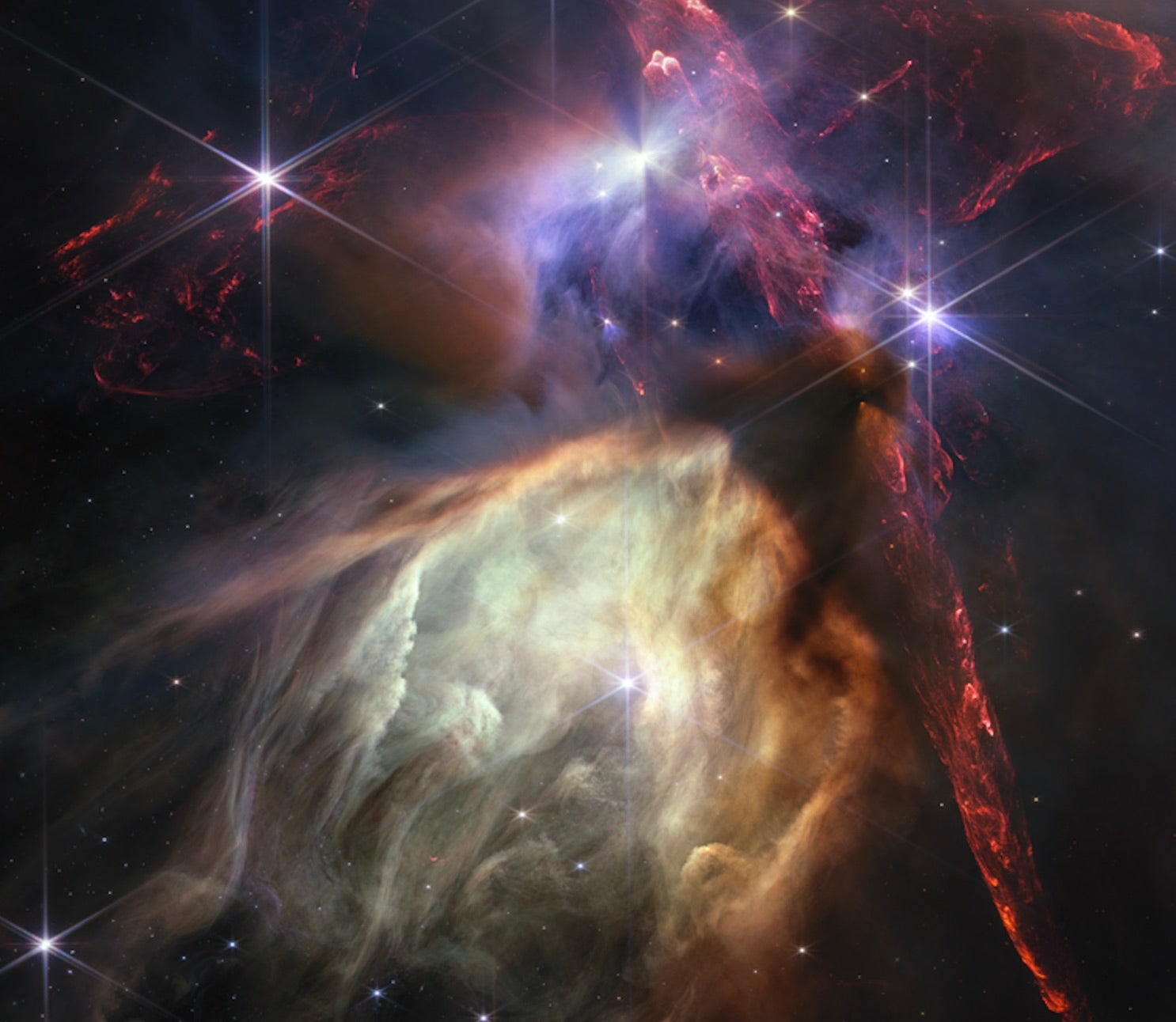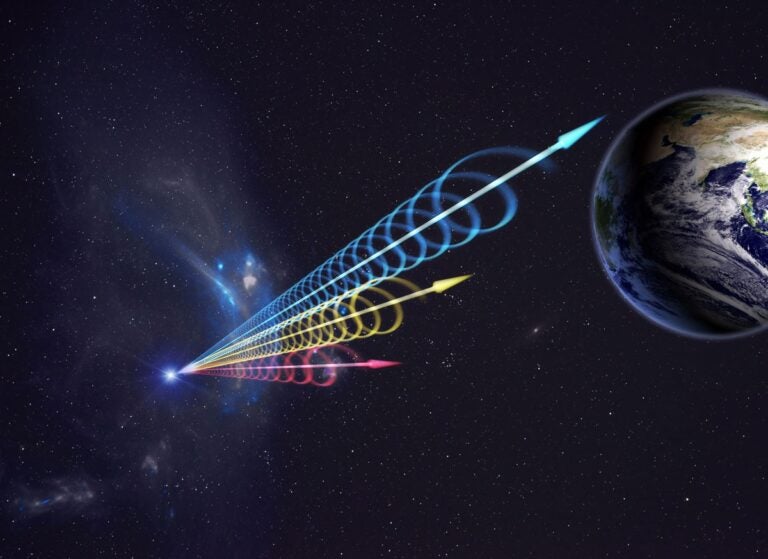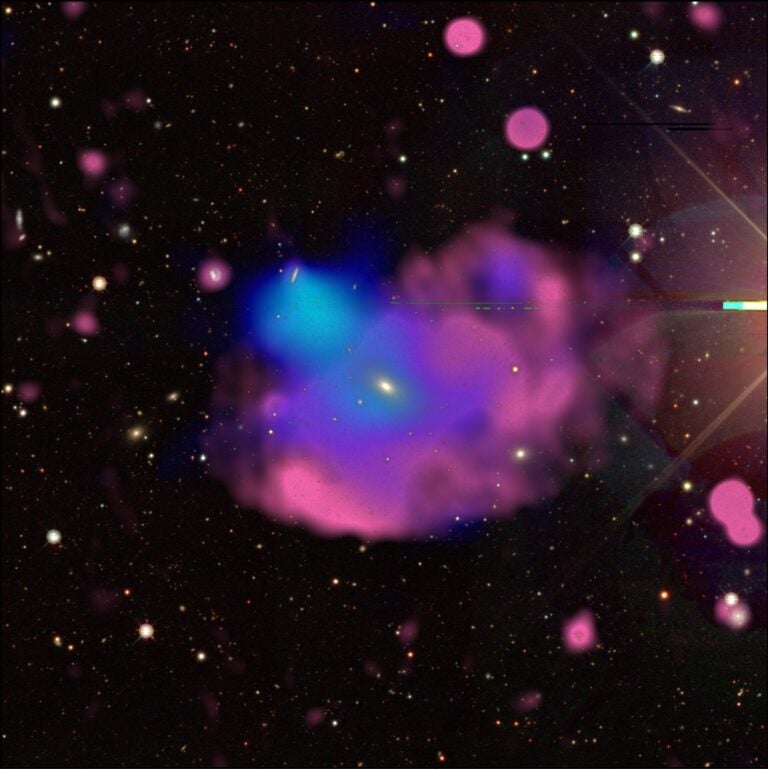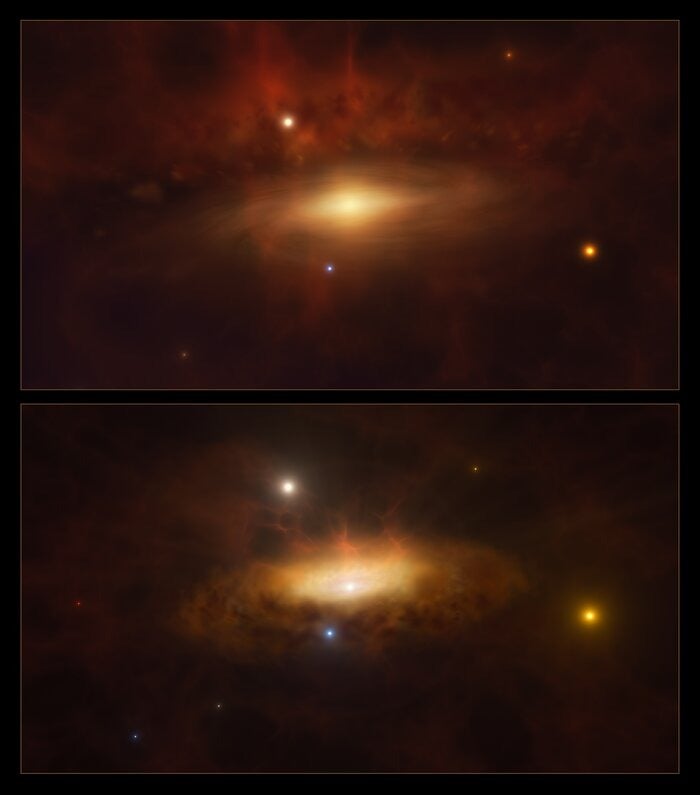
A blazing inferno lights up the Rho Ophiuchi cloud complex in this newly released image taken by the James Webb Space Telescope (JWST). NASA released the image to celebrate the first anniversary of the release of the telescope’s first scientific images. One year on, JWST continues to deliver scientifically spectacular — and intensely beautiful — images of the universe.
Captured by the space telescope’s Near-Infrared Camera (NIRCam), the close star-forming region is 390 light-years from Earth in the constellation Ophiuchus, the serpent-bearer.
The picture reveals a dynamism in a region that otherwise appeared to be a relatively quiet star-forming region. The region of the complex imaged by JWST contains 50 stars the mass of our Sun or smaller, according to a news release. However, the glowing ball dominating the picture is a much larger star surrounded by chaotic swirls of hot dust.
To the upper right are threads of contrasting red jets composed of molecular hydrogen streaming out at opposing ends of a newly forming stars. The dark, dense clouds are the smokey beginnings of protostars. Although difficult to see, there are signs of protoplanetary discs surrounding a few of the stars, an indication of a burgeoning planet formation.
“Webb’s image of Rho Ophiuchi allows us to witness a very brief period in the stellar lifecycle with new clarity. Our own Sun experienced a phase like this, long ago, and now we have the technology to see the beginning of another star’s story,” says Klaus Pontoppidan, who served as JWST project scientist at the Space Telescope Science Institute, in the release.
What’s next?
“With a year of science under our belts, we know exactly how powerful this telescope is, and have delivered a year of spectacular data and discoveries,” says Jane Rigby, JWST senior project scientist of the Goddard Space Flight Center. “We’ve selected an ambitious set of observations for year two that builds on everything we’ve learned so far.”
The Space Telescope Science Institute (STScI) selected 249 proposals for JWST’s Cycle 2 in April of this year. Over 5,000 hours of observations, the space telescope is expected to study the chemical makeup of Jupiter’s moons, whether stripped-envelope supernovae could have contributed to dust in the early universe, and molecular gas in the diminutive Leo P galaxy, just to name a few.
While the JWST mission was designed to have a lifespan of 10 years, a pinpoint-precise launch from its Ariane 5 rocket meant that when the telescope reached its halo orbit at L2, it had enough fuel in reserve for 20 years of observations. NASA scientists anticipate many, many more beautiful images and amazing discoveries to come.









